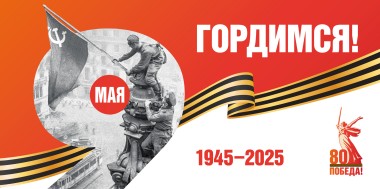Ossetian genocide cannot be divided into South Ossetian and North Ossetian, the tragedy of the people is one, said the President of South Ossetia Anatoly Bibilov, speaking on Wednesday at the international scientific and practical conference at the South Ossetian State University dedicated to the 1920 Ossetian genocide.
“We cannot have the South Ossetian and North Ossetian tragedy separately, if we are one ethnic group, one nation, all the tragedies that occurred in the south and north of Ossetia belong to the tragedy of the Ossetian people. This is both the Beslan tragedy and the Ered victims, which we are recalling today,” the President said.
Bringing the Genocide Information to the World Community
According to him, the Ossetian genocide of 1920 was not studied for the entire subsequent period and was not condemned.
“After all, it was during the Soviet years that he was transformed from the genocide to the classic struggle of the Mensheviks and Bolsheviks, which laid the foundation for Georgia to continue the genocide in 1989-1992, 2004 and 2008. These are links of one chain, the head of state emphasized. - And today, first of all, we ourselves must bring the facts of genocide to the world community. "This is our duty to the memory of those people who were destroyed and the future generations of Ossetians, who should fully know what happened in the 20s."
Konstantin Pukhaev, State Advisor to the President of South Ossetia, Ph.D. in History, in his report on “The genocide of 1920 is the enduring pain of the Ossetian people,” has noted that Georgian social scientists consider the events of 1920 as joint revolutionary actions of the Ossetian and Georgian Bolsheviks against their common enemy - the Mensheviks.
“That is, they see this as only a manifestation of the party and interclass struggle. And if so, then why not a single Georgian settlement was burnt by the Georgian guards and not a single Georgian was killed, but only residents of exclusively Ossetian nationality were slaughtered?” the historian noted.
According to Pukhaev, there was one genocide for Ossetians living in the south and north of Ossetia.
“Sometimes we have to explain why we are talking about the genocide of the Ossetian people, and not of the South Ossetians. It is well known that never in its centuries-old history, Ossetia, either as a whole or a single part of it, was part of the Georgian state. In 1774, the united Ossetia became part of the Russian Empire, not divided into southern and northern,” he explained.
The information war 08.08.08.
The editor-in-chief of the Cultural Petersburg publication, associate professor Sergey Ilchenko, made a report: “The Information genocide of South Ossetia in the 20th century” through video communication, focusing attention in his speech on the positions of Georgian and Western media in August 2008, when Georgia unleashed the war against South Ossetia .
“Most of the Western media still tried to blame the Russian and South Ossetian sides in this war. We know that this was not so. The methods that our opponents used in the information confrontation were the methods of information genocide, when photographs of Tskhinval were presented as photographs of the Georgian Gori. Western photojournalists around the world were sending out the staged shots testifying to the alleged victims among the Georgian civilian population,” Ilchenko said
The materials testify ...
The Chairman of the Committee on Information and Press of South Ossetia, Maria Kotaeva, in her report on the theme “South Ossetia on the positions of truth in the context of the global information war” dwelt on the materials testifying to the Ossetian genocide in 1920.
“Over the five days of working in the archive, I have collected enough materials that once again confirm the atrocious crimes of the Georgian government in 1920.
After the establishment of Soviet power, the media were the conductor of Soviet ideology and it was not customary to talk about national issues and problems of interethnic relations of peoples. The local newspaper “Khurzarin” was no exception. However, in it you can find a number of articles that describe in detail the destruction of Ossetians. The exact data of the killed women, men and children, the number of cattle stolen are published here, the damage of the devastated people is calculated,” Kotaeva said.
Director of the South Ossetian Research Institute Robert Gagloyty, Minister of Foreign Affairs Dmitry Medoev, Chairman of the Committee for Press and Mass Communications of North Ossetia Yuri Fidarov, Envoy of the President of South Ossetia for Post-Conflict Resolution Murat Dzhioev and others made speeches at the conference.
As noted by rector of the South-Ossetian State University Vadim Tedeev, following the results of the conference, a collection of reports will be published that will replenish the university’s gift fund, as well as its library and reading room.













